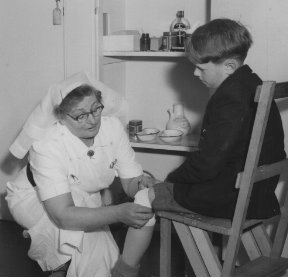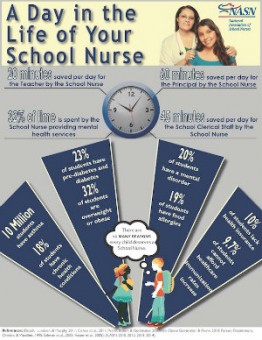Student Health: 5 Things Teachers Should Know
 By Beth Morrow
By Beth Morrow
As educators, our responsibilities go well beyond lesson planning and instruction. Our method of developing and nurturing students into learners takes into account the societal, personal, family and other variables children bring with them to our classrooms. For some, there’s an additional consideration they can’t avoid: a health condition.

While participation in general first aid and emergency situation trainings are mandated by most states, informing educators on the process and procedures of handling student health issues is not. School nurses and medical professionals often inform teachers of individual student health conditions, but there are times when knowing how to deal with that information is left up to a teacher’s professional discretion.
Five things you need to know
Consider these five points, drawn from my experience as a veteran teacher and summer camp program director for teens with diabetes, when building your knowledge of student health concerns.
1. HIPAA and FERPA limit what school nurses can share with large groups of teachers.

The essential take-away from this is that all teachers are no longer informed of every child’s issues. Rather, nurses share pertinent records with specific teachers, not whole staffs.

While FERPA is a federal law designed to protect student information, each state has additional laws and standard operating procedures in dealing with certain student health issues. School nurses are regularly updated on these changes, but unless you’re in direct contact with a student, you may not be privy to the specifics. If you do have questions, start with the school nurse if you have one.
3. Education is your first line of defense.
When one of your students has a medical issue that may require attention, it’s time to educate yourself on how you need to respond in the worst-case scenario. Many times, your school nurse is prepared with an action plan and will let you know your role, but clarifying and creating a list of specific steps to follow will help ease concerns on the part of everyone involved.
It’s important to consider the myriad situations encountered by the student during the day (classroom, lunch room, recess, gym, art, bus stop, etc.) and make certain the limitations and possible problems with each are taken into account. Documenting the plan and keeping it in a common, accessible (to informed staff only) location is one way to reduce fears and help focus staff actions should an emergency situation arise.
4. Students with the same health conditions may not exhibit the exact same symptoms or have the similar reactions.

One student who suffers with migraines might have an aversion to smell or light, whereas sound might make another student’s migraine worse. Some children with diabetes get sleepy or withdrawn when their blood sugar plummets while others grow angry and excessively verbal. Inform yourself by talking with the nurse, student (and parents, if appropriate) about their symptoms and preferred way of handling issues before they become so large that a response plan is necessary.
5. Chronic illness can impact class attendance.
When a student requires rest, recuperation and even hospitalization, school attendance suffers. If the data is available, looking over student attendance from past years to get a sense of how their health conditions have affected their ability to attend school provides valuable insight into potential future issues.

Is it possible to provide lessons via email or online? Will you interact through phone calls or text messages? What is the best method for assessing student growth based on the lessons you provide? In this case, special education teachers may be a good resource since they often have expert knowledge in methods of alternative assessment.
Forethought and guidance are critical
The spectrum of health issues our students face is mind-boggling, but our response to their needs shouldn’t be. With forethought and guidance from school medical personnel and even students, worries about children with health conditions can be reduced, leaving educators to focus on what they enjoy most: the learning experience for kids.
Image credits
Their History: Nurse bandaging child’s knee (CC)
NASN infographic
Beth Morrow is a veteran middle school ESL and reading educator, freelancer and columnist. Her work has appeared in ASCD’s Inservice and Express, Camp Business and Diabetes Health magazines, and she has spent 21 summers as a program director at a camp for teens with diabetes. Connect with her on Twitter @BethFMorrow or her educator resource blog, Morrow in the Middle.


































